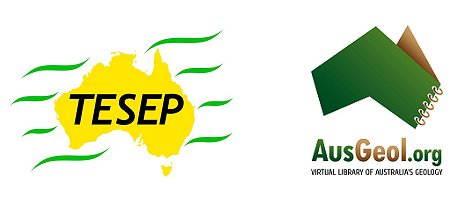Biological and Chemical Sedimentary Rocks
Chemical and biochemical sedimentary rocks may be made up of:
- minerals that have grown directly from mineral-rich waters
- minerals that have grown due to biological processes
The following 3D models provide examples of chemical and biochemical sedimentary rocks.
∗ Evaporite
Evaporite is a general term for a group of rocks that are formed by evaporation of salty water. This usually happens in sites such as salt lakes or in very shallow tidal areas.
A variety of minerals can grow in these environments including halite (rock salt, NaCl), gypsum (CaSO4· 2H2O) and anhydrite (CaSO4).
Thick layers of salt can form when major isolated bodies of salty water dry up.
The model shows the salt-encrusted surface of Lake Gairdiner in South Australia.
∗ Bioclastic limestone
These limestone deposits are a fossil coral reef.
Living coral extracts calcium and carbonate from the ocean waters to construct its skeleton which is made of calcite (CaCO3).
Look closely at the model to identify the coral fragments in this outcrop.
The holes that extend downwards from the surface are solution tubes (mini caves) that have been developed when rainwater dissolves the limestone. Large scale caves and sink holes are common features of limestone areas.
This limestone outcrop is at Dongara in Western Australia and it is about 100,000 years old.
∗ Fossiliferous Limestone
This limestone has been compacted and the calcite has partially recrystallised but traces of ancient organisms are visible on the water-worn surface of the rock..
The disc-shaped features are called archaeocyatha. These organisms were closely related to modern sponges and they grew in large colonies to form reefs.
Archaeocyatha died out about 500 million years ago.
This outcrop is in Wilkawillina Gorge in the Flinders Ranges in South Australia.
∗ Limestone pinnacle
This limestone pinnacle is one of hundreds at Cervantes in Western Australia.
There are several theories for the formation of these features.
They may have formed as infill of solution features formed in carbonate rich sands.
They may have formed by replacement of trees.
They may have developed due to water movement along tree roots.
∗ Limestone and Dolomite
The layers in this rock are limestone (grey) and dolomite (brown).
The original rock was just limestone composed of calcium carbonate but magnesium-rich waters flowing through these rocks after the limestone was buried converted some layers to dolomite which is calcium-magnesium carbonate.
This outcrop is at Italowie Gorge in the Flinders Ranges in South Australia.
The limestone is about 500 million years old.
∗ Limestone coral reef -the whole reef is a fossil!
This large outcrop is approximately 300 m long and shows a cross-section through a coral barrier reef that was formed approximately 370 million years ago.
The rock here is all limestone.
The flat layers of limestone on the right hand side were formed in the shallow water on the side of the reef facing the land.
The sloping layers on the left were formed on the outer side of the reef facing the ocean.
This outcrop is at Windjana Gorge in the Kimberley region of Western Australia
∗ Limestone surface features
The surface of this limestone outcrop has many ridges (called rills) that have been formed by rainwater flowing over the surface and dissolving the rock.
Rills are a common feature of the weathered surface of limestone outcrops.
This outcrop also contains circular features which are cross-sections through stromatolites which were the main reef-building organism 1500 million years ago when these rocks were formed.
This outcrop is at Judbarra in the Northern Territory.
.
Now explore clastic sedimentary rocks!
| Minerals | Rock Cycle | Igneous Rocks | Sedimentary Rocks | Metamorphic Rocks |

A joint TESEP - AusGeol.org production.
This educational product is designed for Yr 7-10 secondary students to complement the earth and space component
of the Australian National Science Curriculum and all Australian State and Territory curricula
The content and design of this educational product is based upon materials previously published by AusGeol.org
